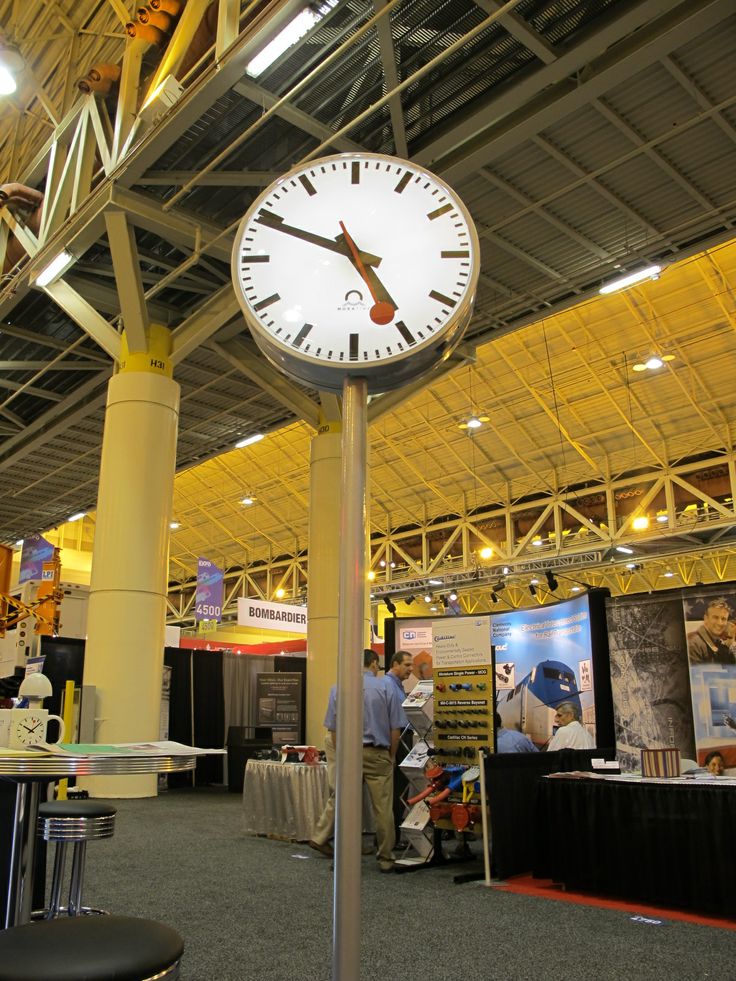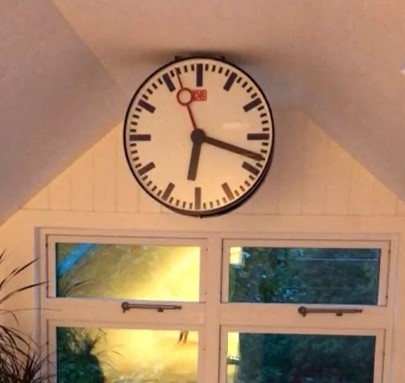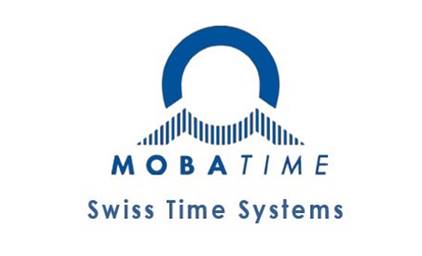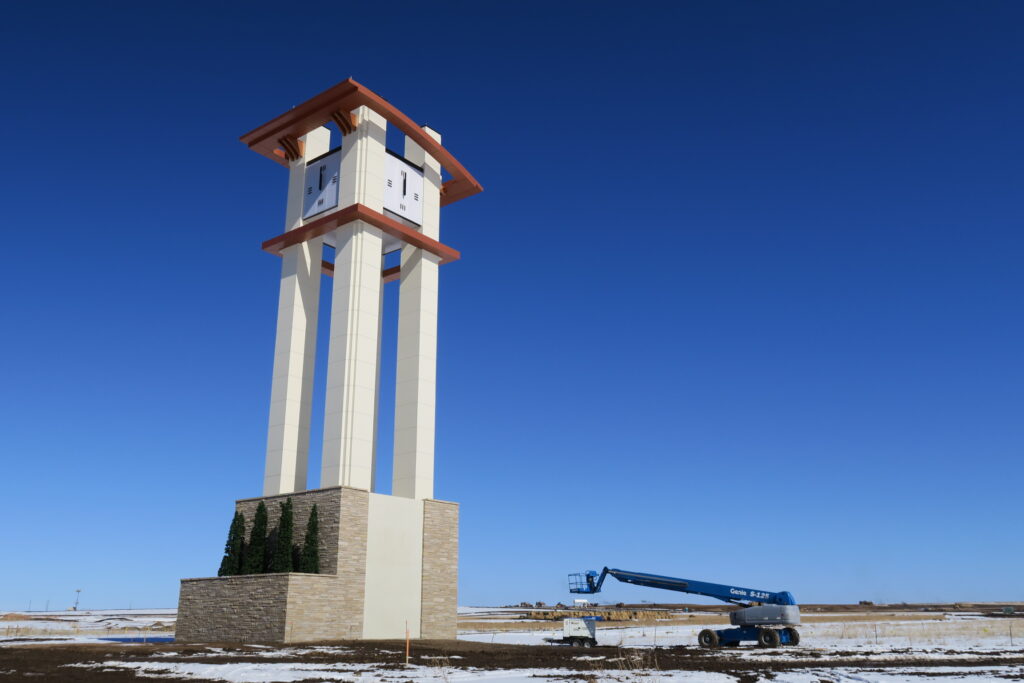
There are guidelines to help you design a clock
The sky’s the limit when it comes to clock design – or is it? Clocks like the one at Aurora Highlands in Colorado certainly make you think so! The clock tower stands 110 feet tall and is visible from the air as you fly into Denver. But the truth is, there are guidelines to help you design the best clock for your space.
There’s a lot to consider when designing a clock. What type of clock will you choose? How big should it be? Will your hands and dial be classical or more modern? Does it need a light source? The process can be overwhelming. Luckily, we’re here to help.
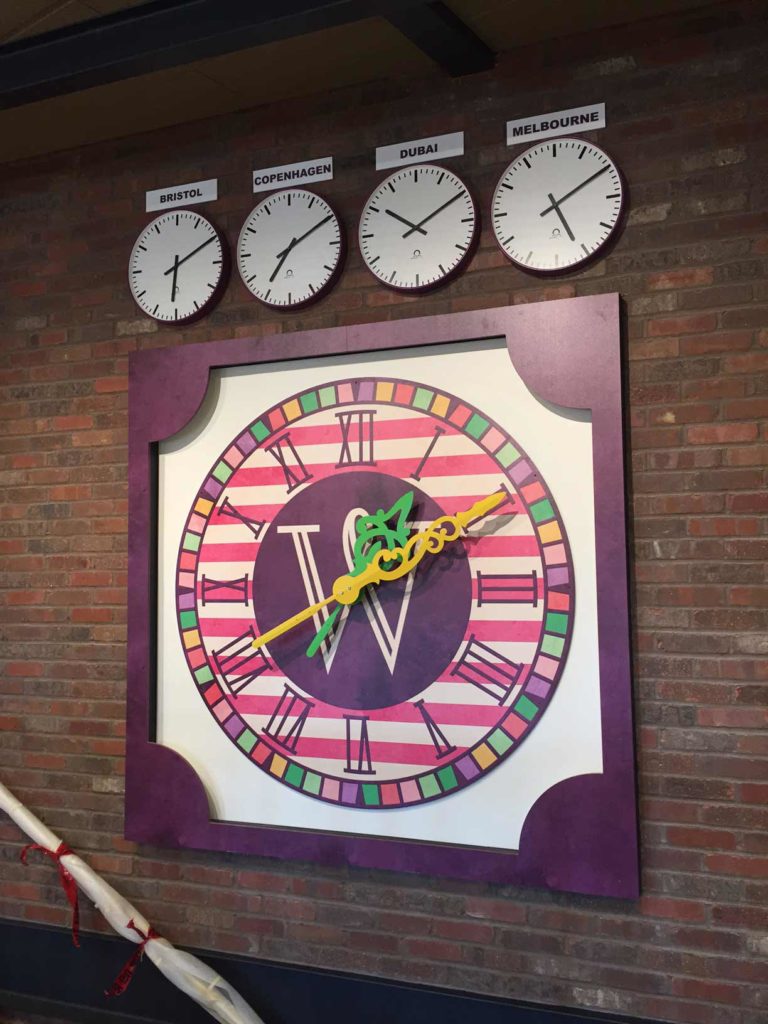
Choosing the right elements for your clock to
- Maximize readability. A clock’s primary purpose is to tell people what time it is. To serve your audience, you must keep this top of mind while designing your clock.
- Enhance your space. Clocks don’t just tell time. They also make great decor. And they lend importance to your space. The right clock becomes a landmark – even if it’s located within a building.
- Put a cherry on the top. The cost for this interactive element is minor compared to the cost of the building – and the benefit it provides. Not many dynamic architectural features can invoke universal participation like a clock!
We’ve been in this business for over 35 years – and we’ve learned the keys to great clock design along the way. Today, we’re sharing them with you. Here are 6 key things to consider as you design your clock:
1. Which Type of Clock Is Right for Me?


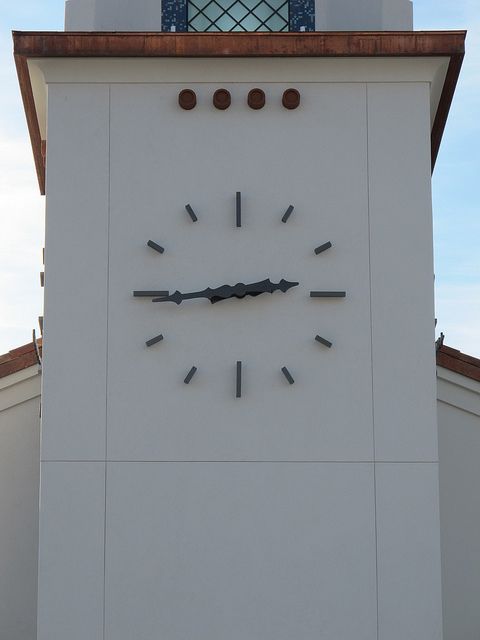
There are many different types of clocks to choose from. Each has its pros and cons. Let’s talk about how to make the best choice for your space:
Will you attach the clock to an existing building or structure?
If the answer is yes, you’ll want to consider a Case, Bracket, or Skeletal Clock. All three of these clocks work for both indoor and outdoor settings. Here’s why you might select one over the other:
- Bracket Clock: One huge benefit of a bracket clock is that it can be attached to almost any existing wall. You can add one without constructing a special clock tower or renovating a building.
- Case Clock: A case clock is a fully enclosed tower clock. The clock motor and illumination are self-contained and fully-enclosed. This makes them a great, weatherproof option for outdoor tower clocks. Our case clocks have stayed strong through snowstorms and even hurricanes!
- Skeletal Clock: A skeletal clock is a tower clock without a surrounding case. Instead, its hands and hour markers are mounted directly to a building or wall. Skeletal clocks are the best choice for a really large clock. They’re also a perfect choice when you want your clock to take a different shape. Two rectangular 11-foot clocks on UDC’s New Student Center provide an example of how a skeletal clock accommodates both shape and size.
Will the clock be freestanding?
If so, you’re looking at either a Clock Tower or a Post Clock. These clock types are most suitable for outdoor spaces. Let’s look at each of these clock types in a little more detail:
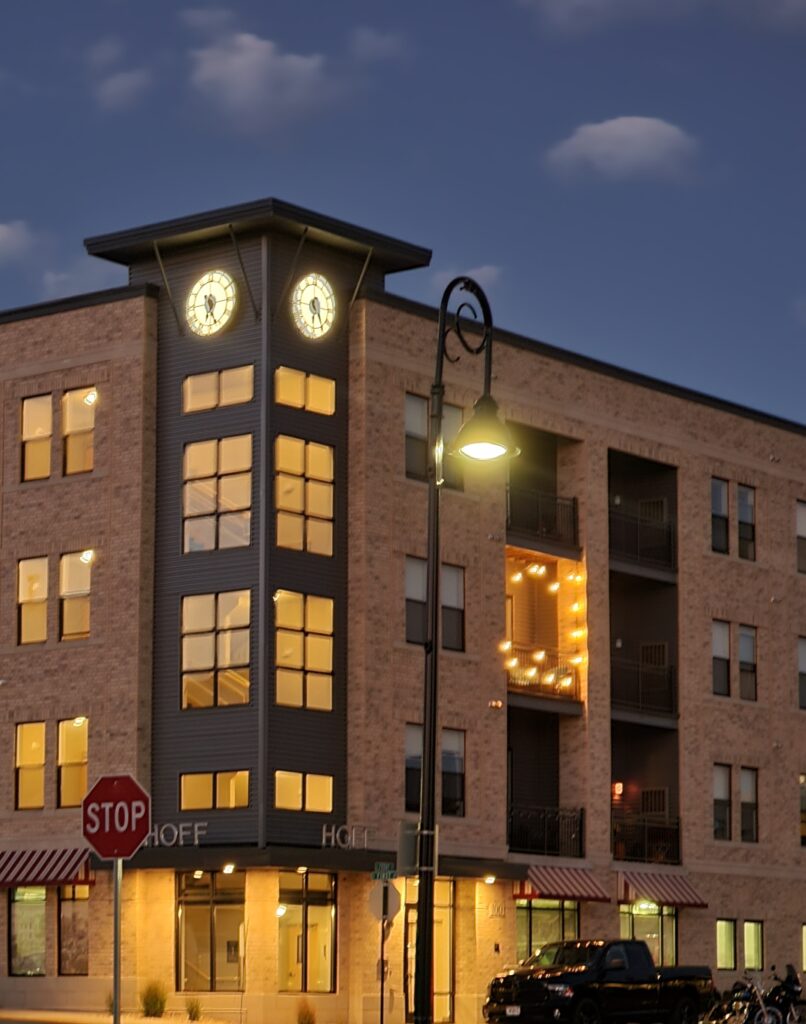
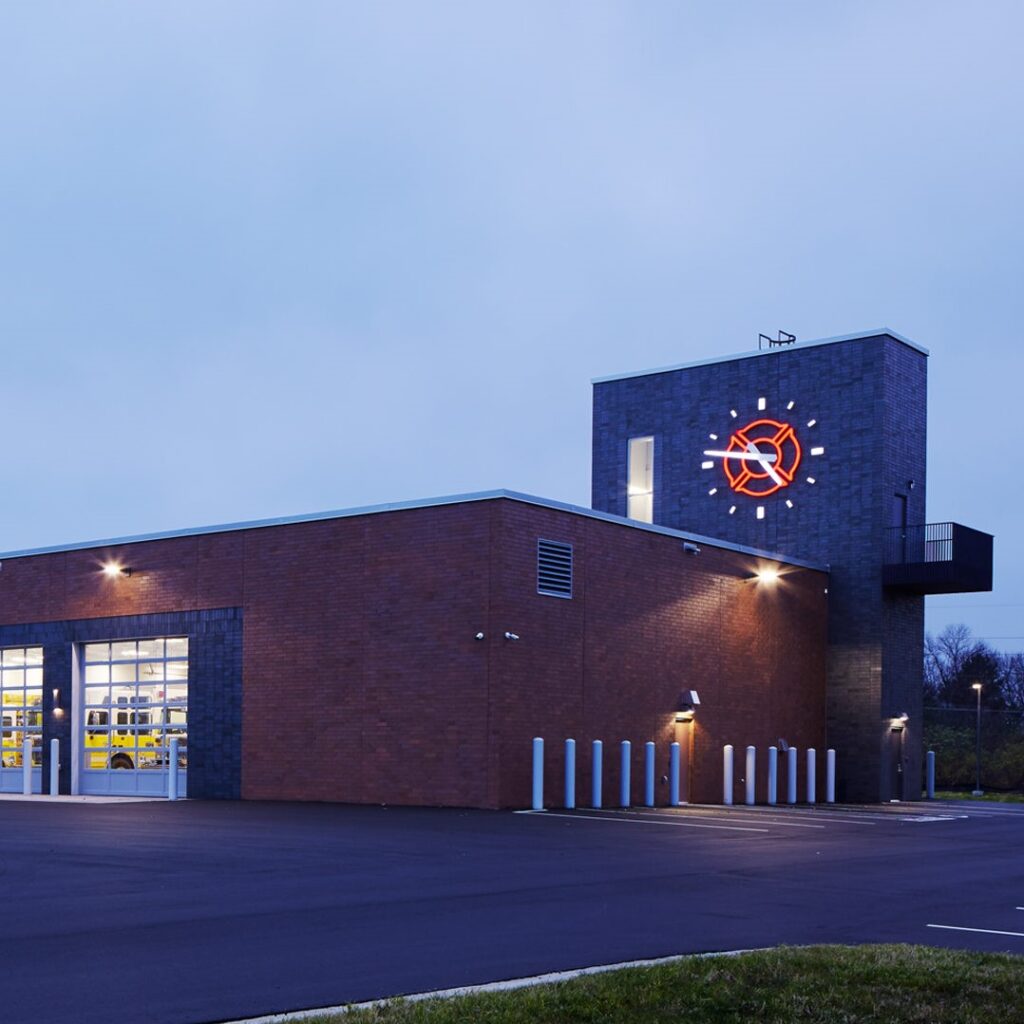

- Clock Tower: A clock tower is a dedicated structure, built specifically to house a tower clock. Clock towers usually play host to two or more case or skeletal clocks. Most commonly, clock towers have one clock on each side. But this, too, depends on your space and location – there’s no sense putting a clock on a side that will never be viewed!
- Post Clock: A post clock is also sometimes called a street clock, as they’re often placed along a street or path. As the name suggests, a post clock sits on top of a post. Like bracket clocks, post clocks don’t require a lot of fancy infrastructure.
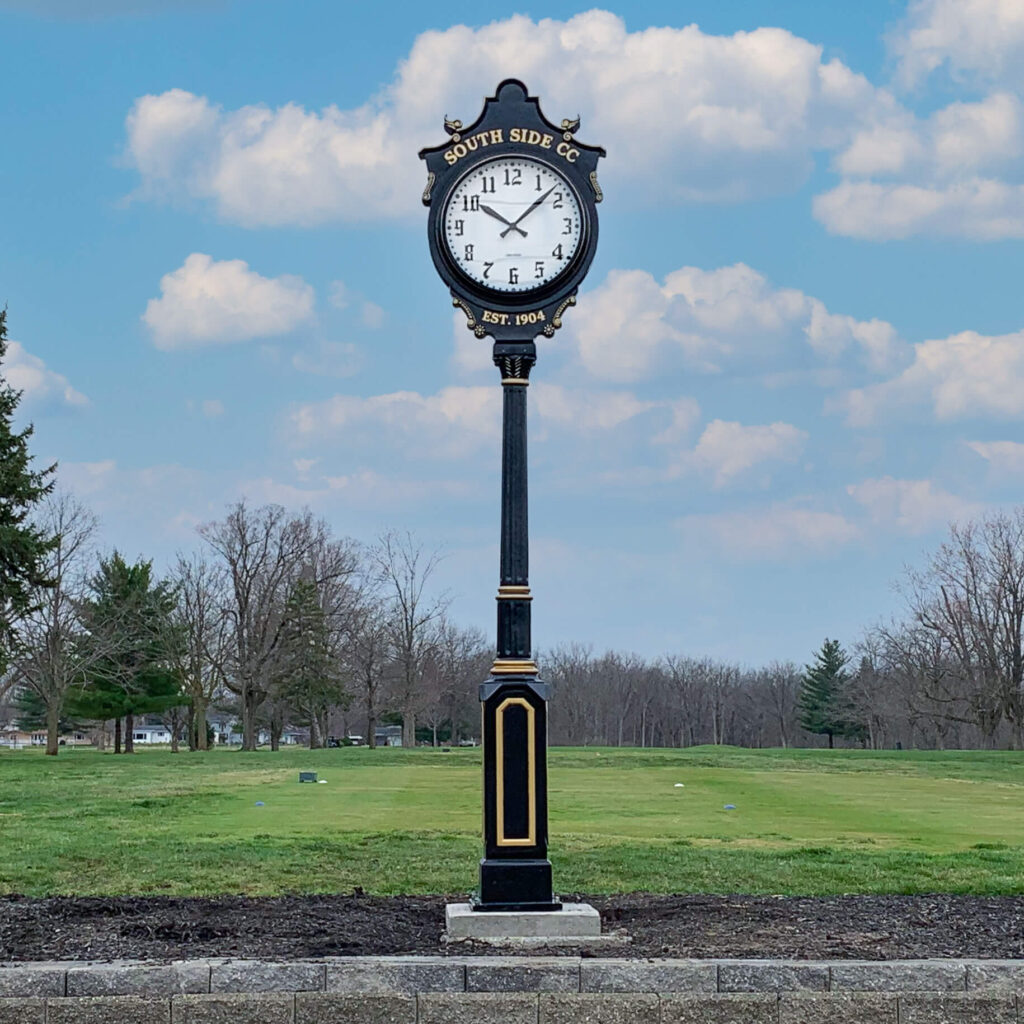
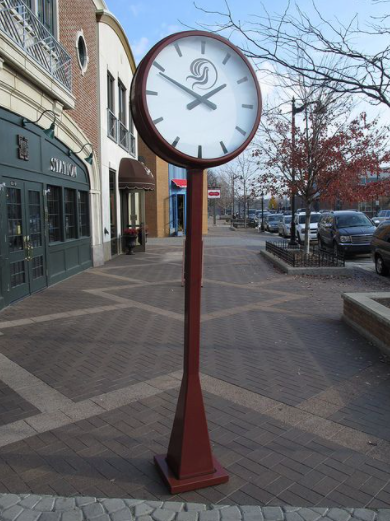
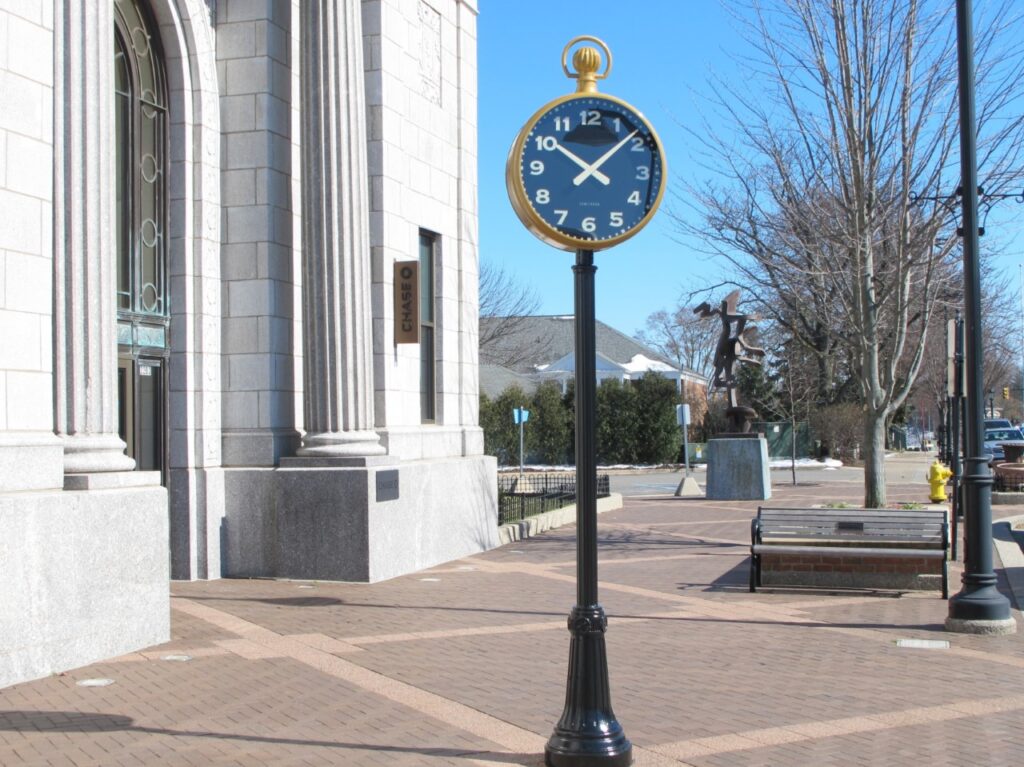
2. How Big Should My Clock Be?


When you choose a size for your clock, first consider any constraints
Clock size is important. It not only helps determine whether your clock will look good – it also impacts readability. You must consider several factors to choose the right clock size.
- How much space is available on your tower or wall? You’ll have to stay within this range. Also consider how much of the tower or wall you can take up with a clock and have it look good.
- What type of clock are you putting up? A skeleton clock can be as big as you want it to be. Other types of clocks will have size limits based on the way they are constructed or installed.
Second, consider viewing distance
- Where will people be standing when they look at your clock? For example, let’s say you’re placing your clock near the top of a tall building. If the clock is meant to be viewed from the ground, it will have to be quite large. Much larger than, say, a post clock that will sit 10 feet above street level.
- Will they be able to read the clock from that distance? Here’s a helpful diagram to help you determine the best diameter for your clock. If you know the viewing distance, you know how big to make your clock. As a general rule of thumb, you should estimate 6 inches of clock-face diameter for every 50 feet of viewing distance.
And, consider the aesthetics
- How will a clock that size look in context? Just because you can design a clock that covers the entire south side of your building doesn’t necessarily mean you should. Consider how your clock will look in its overall setting before finalizing your size specifications.
3. Which Style Dial and Hands Should I Choose?
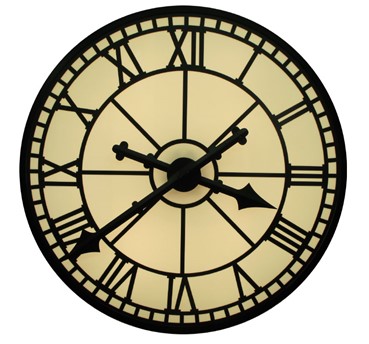
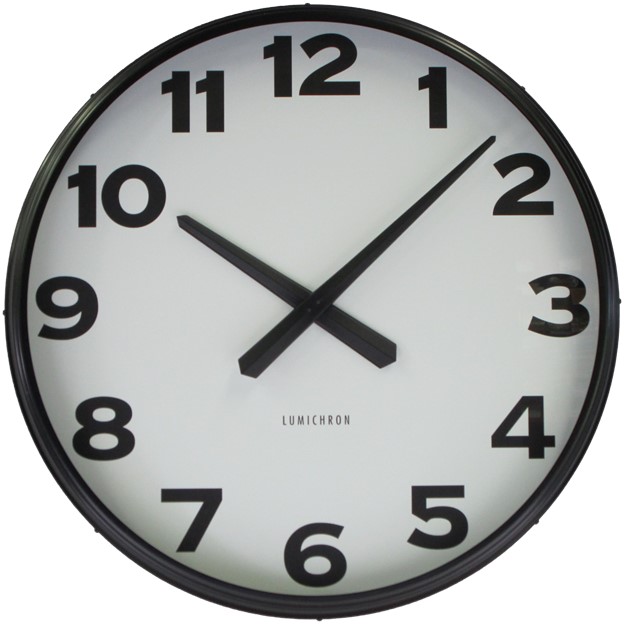
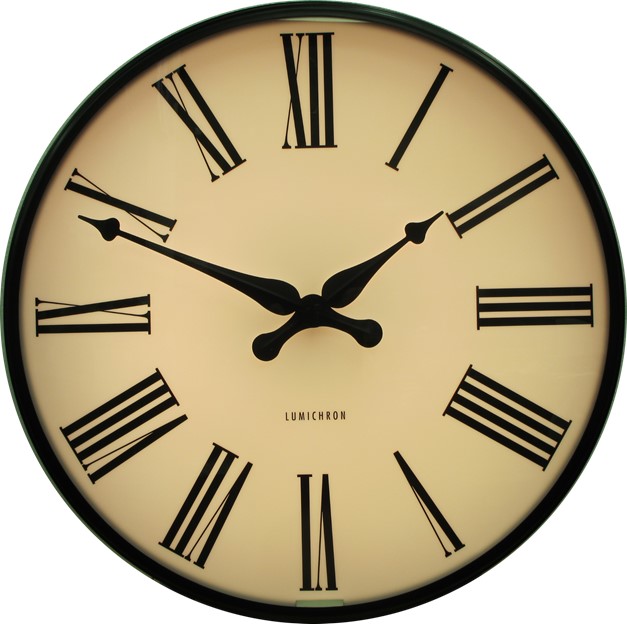
Selecting a dial and hands is where you can let your creativity run free. At Lumichron, we make clocks that range from classical — think Roman numerals and fancy hands — to modern and eclectic. The clock we built for Westport Library (Westport, CT) shows how creative you can get when it comes to dials and hands.
DOT … DOT … DOT …
The Westport Library clock has an minute created of an oversize ellipses. Designer Alexander Isley took inspiration from the library’s logo, which also includes an ellipsis. The custom hour hand is combined with a straight block minute hand, and an invisible dial. The clock face and minute hand feature the three-dot ellipsis motif that’s used throughout the building. Every hour, when the minute hand moves to quarter-past, all dots align. I love how the two circular windows line up with the white clock face, creating another dot dot dot.
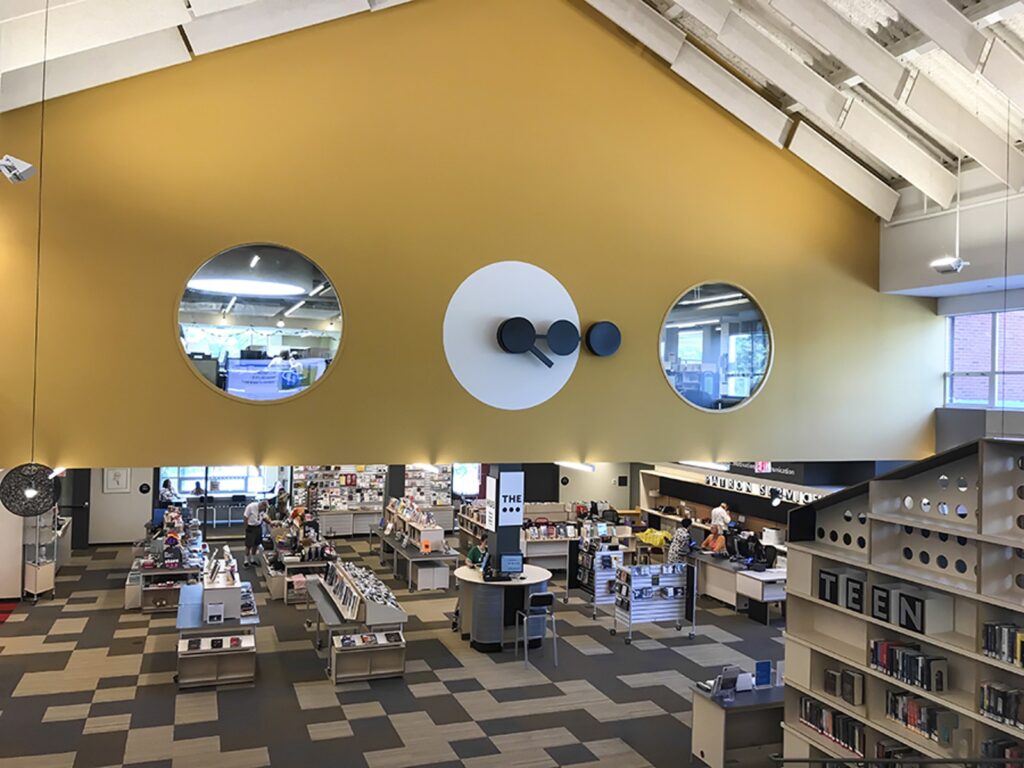
In a modern world, we often think of sleek and minimal as the trendy choice. But when it comes to clocks, the classic look actually wins the popularity contest. And it wins by a landslide! In fact, we sell almost 20 Roman dial clocks for every Arabic or modern dial clock we make.
What style is best suited to your space?
Consider the surrounding architecture, and the overall ambiance you aim to create. The type of clock you’ve selected may also play in.
Most of our customers find that it’s easiest to start with the dial and choose hands to match. Roman clock faces tend to look best with more decorative hands. Arabic dials look better with plain hands, such as a straight or block style.
Check out our Dial and Hand Selector to preview various hand and dial combinations.
Lumichron can also create completely custom dials and hands – as we did with the Westport Library clock. Customization is available for any type of clock that we make.
While you’re getting creative, here are some things to keep in mind about clock hands
- Visibility is key. With analog clocks, the time can only be read when the hands are legible. Some clock faces have no indexes or numbers to mark the hours – the hands tell the time all on their own. Clock hands should be bold, and should contrast with the clock face or background. (More on this when we talk about clock colors, below). This increases the viewing distance of the clock – and the ability to tell the time by it is improved. Clock hands also need to be distinguishable from each other. Typically the hour hand is bolder, and the minute hand is longer.
- Hand length depends on clock diameter. If your clock has a minute track, the tip of the minute hand should be just above the minute track. If not, the minute hand should end a little over halfway across the numbers or indicators. The length of the hour hand is determined by the minute hand. It’s always 2/3 the length of the minute hand, measured center to tip.
- Hand width is a matter of style – and viewing distance. The width – or visual weight of the hands – is determined by the style. Some styles are available in varying widths or weight, much like a type font: light, regular, or bold. Hand width impacts legible viewing distance. Thinner hands mean you’ll have to be closer to the clock to see the time.
- Weather plays a role. On large, open face clocks, hands must withstand all kinds of weather – including wind, rain, sleet and snow. We even have examples of our clocks making it through hurricanes unscathed. The hands must be strong enough to withstand the elements. You then need a clock motor strong enough to power their size and weight. The finish must also be weatherproof to prevent fading, etc.
- Don’t forget to add a tail for balance. Often a clock hand will need a tail for balance. This is something designers often forget in their drawings, and it comes as a surprise. The tail can be finished (using paint or powdercoat) to match the dial so that it isn’t as visible. Or, it can be part of the design. We have made custom-carved wood hands when restoring historical clocks.
- An extra note for smaller, enclosed clocks. There must be enough clearance for the hands between the dial and the glass crystal. This needs to be considered in addition to the balancing and finishing issues.
Probably the most famous design is the truly timeless face & hand design done by Hans Hilfiker for Swiss Railways. You can read more about his design here.
4. What Are the Best Colors for Clocks?
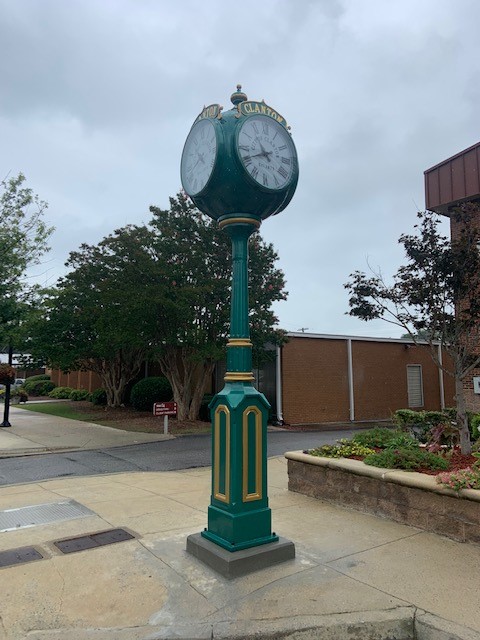

Contrasting colors perform best for readability
For a skeletal clock, the wall is typically the background and acts as the face of the clock. The most legible is white on black or black on white. If your background is stone, brick, or wood, it’s best to choose a contrasting color. For example, we suggest black or bronze clock hands on light-colored stone. Or white or silver clock hands on darker-toned brick.
Clocks with a dial typically feature a white or ivory dial with black hour indexes and hands. But some dials feature the reverse – a black face with white or gold numerals and hands. The contrast in colors makes either choice very readable.
The best color to choose for your clock is one that goes well with the surrounding decor and shows up well against the background.
If you’re unsure, you can use a photo editing tool to see what different colors would look like on your building or backdrop. Here, we show what the Houston apartment complex clock would have looked like in white or silver. As you can see, the contrasting options look much better than the black.
5. Do I Need Lighting for My Clock?
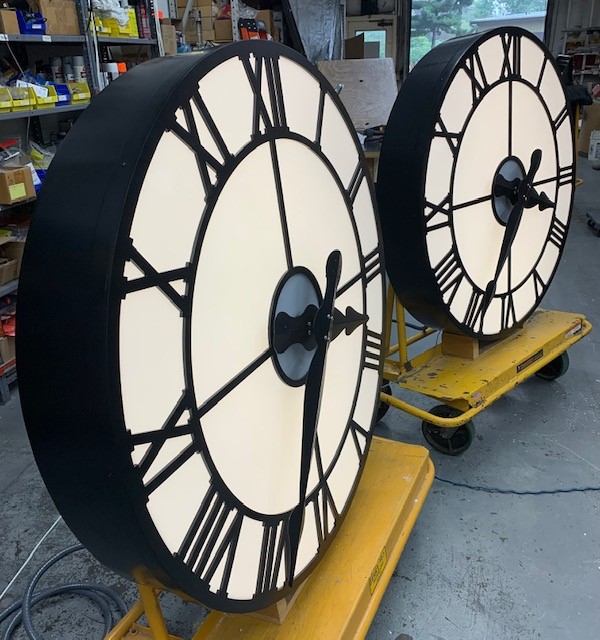
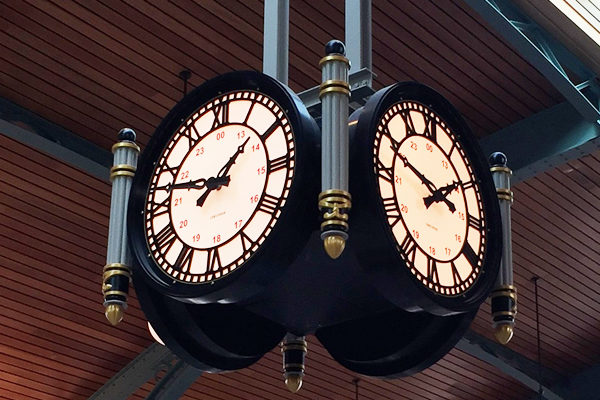
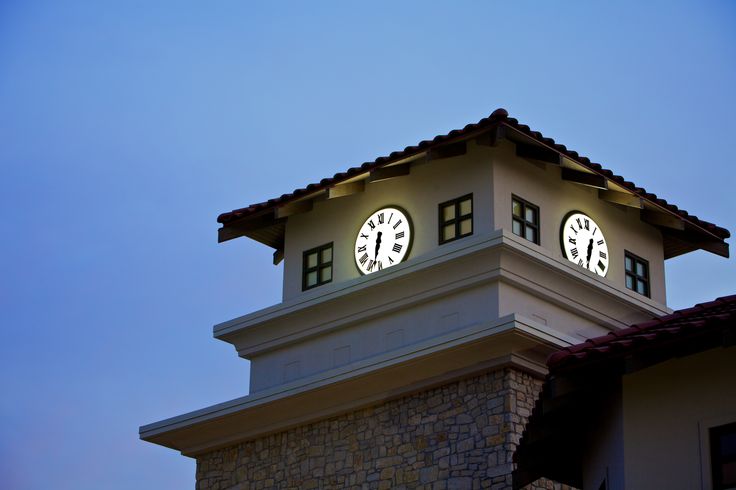
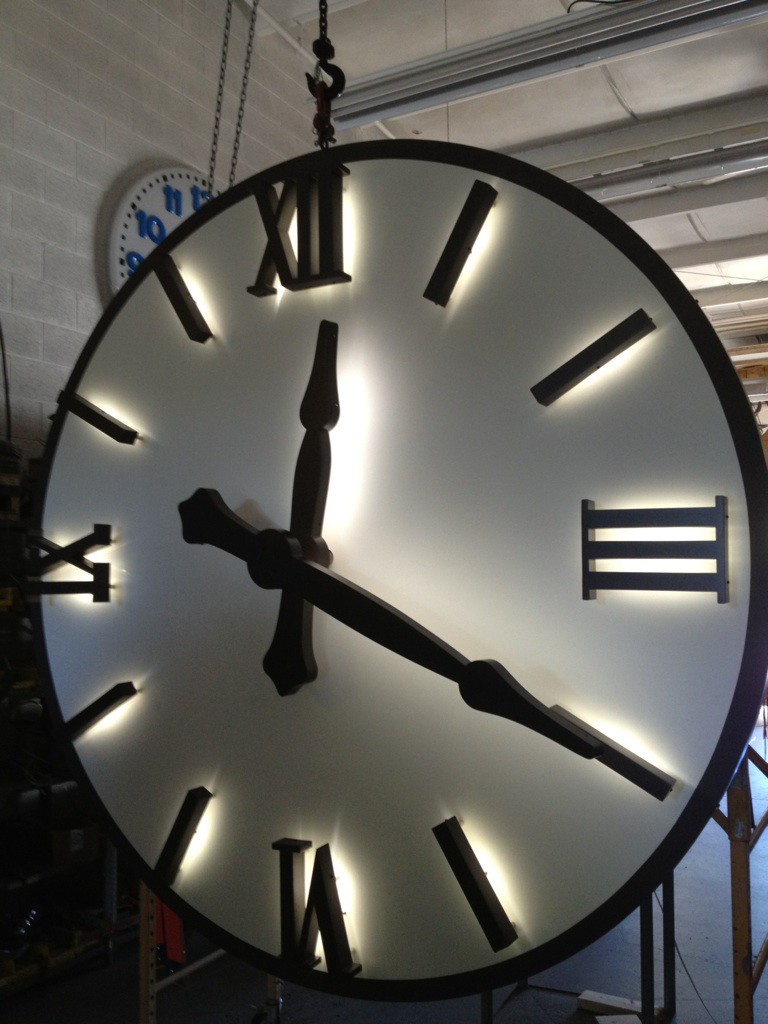
If you are designing an outdoor clock, it will need lights – assuming you want your clock to be visible at night. There could be reasons to illuminate an indoor clock as well.
Clock illumination comes with its own set of design decisions
- How the clock will be illuminated? Face-lit is the most common option, and it works for all clock-types. In a face-lit clock, the entire face is lit up, highlighting the hands and dial.
Skeletal clocks can be face-lit or halo-lit. A great example of halo lighting is the illuminated skeletal clock we built for University of Wisconsin’s Grainger Hall. The glow of LED halo lights on each hand and hour marker lets students read the time at night.
As a less expensive option, some customers purchase a non-illuminated clock and then use spotlights to illuminate it at night.

- Which color temperature is best for a clock? The LED lights we use come in various color temperatures: 3100k (warm white), 4200k (medium), and 6500k (cool).
We usually recommend ‘warmer’ whites (3200k or 4100k) for more classic Roman dials. They give the old world appearance of incandescent bulbs. Cooler whites (5000k to 7000k) tend to be more popular for modern dials with Arabic or simple line marks.
Worried about having to change the lightbulb in your tower clock? You won’t have to do it often. We use long-life LEDs that are rated for 100,000 hours – that’s 22 years if they’re on for 12 hours a day!
6. How Is A Tower Clock Controlled?
Large tower clocks are located up high, so it would be almost impossible to manage settings at the clock. Even a bracket clock or post clock would require a ladder, and who wants to mess around with that?
We don’t!
That’s why ALL LUMICHRON CLOCKS are controlled remotely.
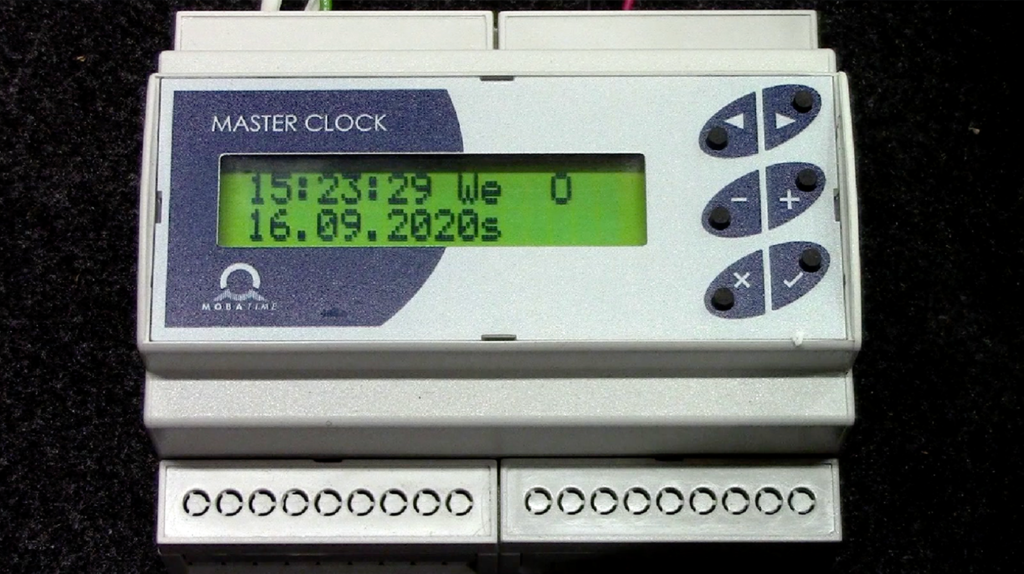
It is possible to operate a clock with a three-position switch (run/fast/stop). But it’s not the most practical option. It requires a certain type of clock motor which operates on 120v, and runs continuously. The switch needs to be in a very convenient location. That’s because you’ll need to fiddle with it for any power interruptions, and every Daylight Savings Time (DST) change.
We use automatic controllers to allow for hands-free operation
Our automatic controllers serve as the ‘brains’ of the clock. A built-in quartz crystal for time-keeping ensures these controllers remember the time. So they can reset the display clock(s) automatically after power interruptions and DST changes.
If you want the clock to be even more exact, this crystal can be synchronized to NIST with a GPS signal. Without an external synchronization source the quartz crystal can ‘drift’ a few minutes per year. The drift can be corrected by pushing buttons on the controller. But many clients like the exactitude and hands-free nature of GPS.
Here are a couple questions we often get about clock controllers:
- How does an automatic clock controller work? The controller sends out a signal, called an impulse, which tells the clock what to do. This means the clock motor only operates for 2 seconds out of every minute. A single controller is capable of operating many clocks – sometimes an entire building full of clocks! So a typical 4-face post clock or clock tower has just one controller.
- Where should the controller be located? The controller needs to be wired to the clock motor with a 24v cable. Its location must accommodate the required wiring, but should also be convenient. Usually, the device is placed in an accessible, secure location such as the electrical breaker room or data closet. You should avoid mounting your controller in the tower, behind the wall or above a ceiling.
- What’s special about a Swiss Railway Clock? Most clocks have a minute hand that moves continuously. But some clocks have a minute hand that moves just once per minute. Clocks up to 42” diameter and covered with a glass crystal can have this feature.
How does it work? A sweep second-hand is exactly synchronized with the minute hand. As the sweep passes over 12:00, the minute hand moves in precise synchronization. This synchronized behavior stems from a proprietary signal from an automatic clock controller. Lumichron is the US Partner of Mobatime, who makes these special controllers.
The feature is common in the Swiss Railways, where the sweep does a rotation in 58 seconds, then pauses at 12:00. The sweep moves again as the minute hand moves.
Now that you know what to consider, you’re ready to design your clock!
We hope you’ve found this article helpful! If you still have questions about clock design for your particular space, we’re happy to help.
Give us a call at 616-245-8888, or send us an email at ian@lumichron.com.
